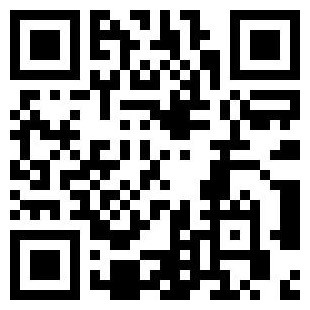22
2023
-
04
The growth rate of global in vitro diagnostics comes from emerging markets, and China's market size has exceeded 120 billion yuan.
Classification:
Industry News

In vitro diagnosis is a branch of the medical device industry. It refers to a unified detection system composed of relevant medical clinical diagnostic instruments and supporting detection reagents outside the human body. Through the detection of human samples (blood, body fluids, tissues, etc.) to obtain clinical diagnostic information, and then to judge the disease or body function of products and services.
In vitro diagnosis plays an extremely important role in the whole process of disease prevention, diagnosis, monitoring and guiding treatment, and is an indispensable tool for modern disease and health management. Currently, about 2/3 medical decisions worldwide are based on diagnostic results, of which more than 80% are in the field of in vitro diagnostics.
According to the medical examination items and the technical methods adopted, in vitro diagnosis is mainly divided into immune diagnosis, biochemical diagnosis, molecular diagnosis, blood gas diagnosis, blood and body fluid diagnosis, microbial diagnosis and so on. According to the different requirements for the implementation site at the time of testing, in vitro diagnosis can also be divided into central laboratory diagnosis and POCT instant diagnosis.
Global In Vitro Diagnostics Market Growth Steady
Since the 1980 s, with the rapid development of science and technology, especially the important breakthroughs in modern biotechnology, monoclonal antibody technology, microelectronic processors and photochemistry, the global in vitro diagnostic industry has experienced four revolutions of "biochemistry, enzyme, immunoassay and molecular diagnosis", and has passed the initial stage and the initial stage of growth, A mature industry worth 100 billion US dollars has been formed.
In terms of market size, the global in vitro diagnostics market has grown steadily in recent years, with the overall global IVD market capacity growing to $117 billion in 2021 from $83.3 billion in 2020, according to Kalorama information statistics. The molecular diagnostics market reached $37.04 billion, or 32%, and the POCT market reached $31.59 billion, or 27%, mainly due to the surge in demand from new crown testing.
In the past, the market ranked first in the immune diagnosis market size of 22.23 billion US dollars, accounting for 19%; Biochemical diagnosis market size of 5.85 billion US dollars, accounting for 5%, blood diagnosis market size of 3.51 billion US dollars, accounting for 3%; Other products accounted for 14%.
From the regional market pattern, the global in vitro diagnostic demand market is mainly distributed in North America, Europe, Japan and other developed economies, accounting for more than 70% of the share, the demand is relatively stable, of which the United States is the global in vitro diagnostic innovation center and the largest demand market.
At present, the fastest growth rate of the global in vitro diagnostic market comes from emerging markets. Although China, India, Brazil and other emerging markets occupy a small share, due to the large population base, rapid economic growth and increasing aging degree, medical security investment and per capita medical consumption expenditure continue to grow in recent years. As an emerging industry, in vitro diagnosis has a good development space and is in a period of rapid growth.
China's in vitro diagnostic market situation China's in vitro diagnostic industry started in the 1980 s, although it started late, but after 40 years of rapid development, has formed a wide coverage, comprehensive competitiveness of the industrial chain, the domestic market competition is becoming increasingly fierce.
Rapid development of in vitro diagnostic industry in China
According to the China Business Industry Research Institute, the size of China's in vitro diagnostics market has grown from $45 billion in 2016 to $124.3 billion in 2021 (excluding new crown testing). In terms of market segments, immunodiagnosis is still the largest segment of China's IVD market, accounting for about 38% of the market; biochemical diagnosis, molecular diagnosis, POCT diagnosis and other diagnostic technologies occupy 19%, 15% and 11% of the market share, respectively.
Immunodiagnosis is the largest market segment in the in vitro diagnostic reagent industry in China at this stage, and chemiluminescence technology has become the mainstream detection method in this field. According to data from the China Business Industry Research Institute, the size of China's immunodiagnostic market in 2021 is about 47.23 billion yuan. With the continuous development of methodology, immunodiagnosis has gone through the technical stages of radioimmunoassay (RIA), colloidal gold rapid test, enzyme-linked immunosorbent assay (ELISA), time-resolved fluorescence (TRFIA) and chemiluminescence immunoassay (CLIA).
Among them, chemiluminescence immunoassay has the advantages of good specificity, high sensitivity, accurate quantification, stable results, and wide detection range. It is widely used in the diagnosis of tumor markers, infectious diseases, endocrine function, hormones, etc. At present, it has become the mainstream diagnostic technology in the field of immunoassay, and chemiluminescence has occupied more than 90% of the immunodiagnostic market in developed countries such as Europe and the United States.
Molecular diagnosis is the application of molecular biology methods, through the detection of individual or its carrying virus, pathogen genetic material structure or content changes and make a diagnosis of the technology, the detection object is mainly nucleic acid. Molecular diagnosis can be widely used in drug gene detection, pathogen detection, non-invasive prenatal diagnosis, early tumor screening and genetic disease diagnosis.
Among them, in the aspect of drug gene detection, through the use of molecular diagnostic technology, the genotype of patients is detected before the use of drug metabolism or molecular targeted drugs, so as to determine whether the patients carry drug metabolism genes or drug targets, so as to realize the individualized treatment of drugs and improve the efficiency of drug use.
In the detection of infectious diseases, molecular diagnostic technology is widely used in the detection and identification of pathogens of various infectious diseases. Molecular diagnostic technology mainly includes gene chip, fluorescence in situ hybridization (FISH), PCR(qPCR, dPCR, multiplex PCR, etc.), next generation sequencing technology (NGS, mNGS, tNGS, etc.), nanopore sequencing, single molecule sequencing (SMRT), gene editing (Crispr-Cas), etc.
Compared with hybridization technology and gene chip, PCR technology is the mainstream technology platform for molecular diagnosis at present. Its main advantages are high sensitivity, easy promotion, and its main limitation is that the detection site is single and known. Digital PCR(dPCR) realizes absolute counting of target molecules and quantitative detection by distributing samples to a large number of independent microunits for reaction amplification, and using reagents or probes to detect target sequences for distribution statistics.
Multiplex PCR can diagnose multiple targets by adding multiple specific primers to a single PCR reaction for amplification to obtain multiple target fragments. Digital PCR and multiplex PCR both belong to the direction of clinical development and are currently in the rapid introduction period.
The second generation sequencing technology is developing rapidly, but the experimental operation is complex and the cost is high. At present, the single NGS technology is relatively mature. Metagenome sequencing (mNGS) can simultaneously identify DNR and RNA fragments of all organisms in the sample at one time through sequencing method, so its detection results are more accurate and can detect unknown pathogens, and can also detect various types of genetic information. At present, mNGS is in a rapid introduction period and is gradually being widely accepted by doctors in intensive medicine, pediatrics and other departments.
However, the amount of mNGS single detection data is very large, so the detection time is long (average 24-48 hours), the detection cost is high, and the current clinical use penetration rate is still low. Pathogen Targeted High-Throughput Sequencing (tNGS) In order to extend NGS pathogen detection to a wide range of fields other than severe and intractable disease detection, focus on common clinical pathogens by reducing the number of target pathogens to be detected, and eliminate the influence of human nucleic acid fragments on detection sensitivity through specific amplification, making the detection more suitable for clinical detection of relatively fixed pathogens, high sensitivity and specificity requirements, detection cost control and other actual requirements.
Nanopore sequencing predicts and interprets the passage of bases by detecting the perturbation of the current when DNA passes through the nanopore. It was first successfully developed and commercialized by OxfordNanopore Technologies Company. The significant advantages of nanopore sequencing include a wider range of sequencing reads, library preparation without PCR chain reaction and therefore faster sequencing, especially suitable for POCT detection of infectious pathogens.
Blood gas diagnosis is mainly based on foreign brands
Blood gas diagnosis is mainly through the determination of human blood pH value and pCO2, pO2 dissolved in the blood gas, to understand the human respiratory function and acid-base balance, mainly used in the critical care unit, heart patient care unit, operating room and emergency room, reduce the mortality of critically ill patients. Blood gas diagnostic instruments and supporting reagents research and development is difficult, high technical barriers, the current domestic market is mainly foreign brands.
At present, there are two kinds of blood gas diagnostic analyzers on the market, dry and wet, wet blood gas is suitable for clinical scenarios that require accurate measurement of various indicators, such as intensive care unit, operating room, etc.; dry blood gas is suitable for rapid diagnosis and emergency treatment in emergency situations, such as emergency department, ambulance, field rescue, etc. Blood gas electrolyte POCT is mainly used for acute respiratory failure diagnosis and treatment, surgery, rescue and monitoring process, the main use of places including critically ill patients intensive care unit, cardiac patients intensive care unit, operating room and emergency, etc.
However, due to the high requirements for blood gas electrolyte POCT detection of arterial blood, the development of the product has been limited before. However, with the change of market demand brought about by the inapplicability of large electrode equipment to bedside detection and a large number of academic promotion and education work of imported brands such as Redomide and Woffin, the current technical method of arterial blood collection has been relatively popular, and blood gas electrolyte POCT is expected to begin to enter a rapid release period.
According to statistics from the US Medtech Insight, the global blood gas analysis market has grown from US $1.6 billion in 2016 to US $2.78 billion by the end of 2020. The global market share is mainly occupied by Redu Mitte, Woffin and Abbott. In the future, with the advancement of technology and the further strengthening of downstream market demand, the global blood gas analysis market is expected to reach about US $6 billion by the end of 2025.
In recent years, the rapid development of China's medical level and the accelerated trend of population aging have led to a continuous rise in the market demand for blood gas analysis. According to the in vitro diagnostic newsletter CAIVD "China's Blood Gas Analysis Market Situation 2019-2020", the scale of China's blood gas analysis market has increased from 1.561 billion yuan in 2018 to 2.032 billion yuan in 2020, redomit, Woffin, Abbott, Roche, Nova, Siemens accounted for about 28%, 24%, 16%, 12%, 9%, 5.4 of the domestic blood gas diagnostic market share.
Previous article
Next
Related News
Address: No.1 Factory Building, No.4, Industrial South Road, Licheng District, Jinan City, Shandong Province

Mobile site


